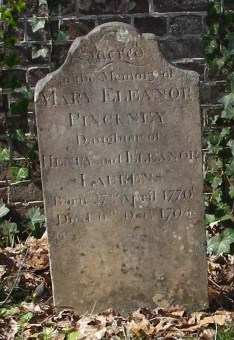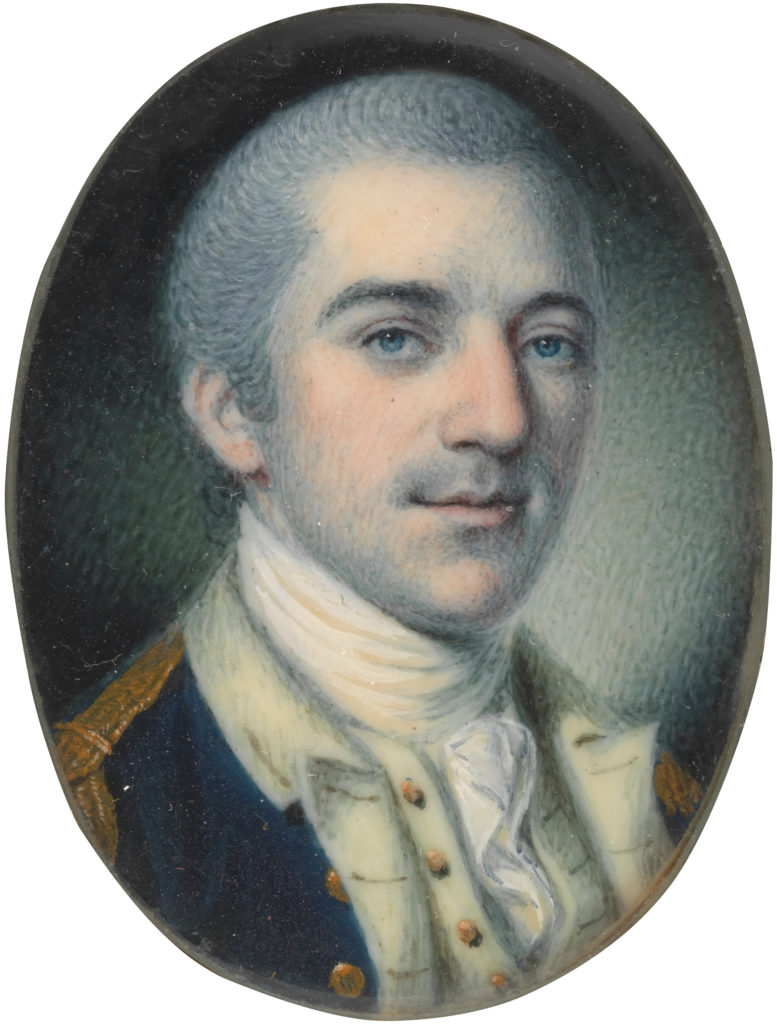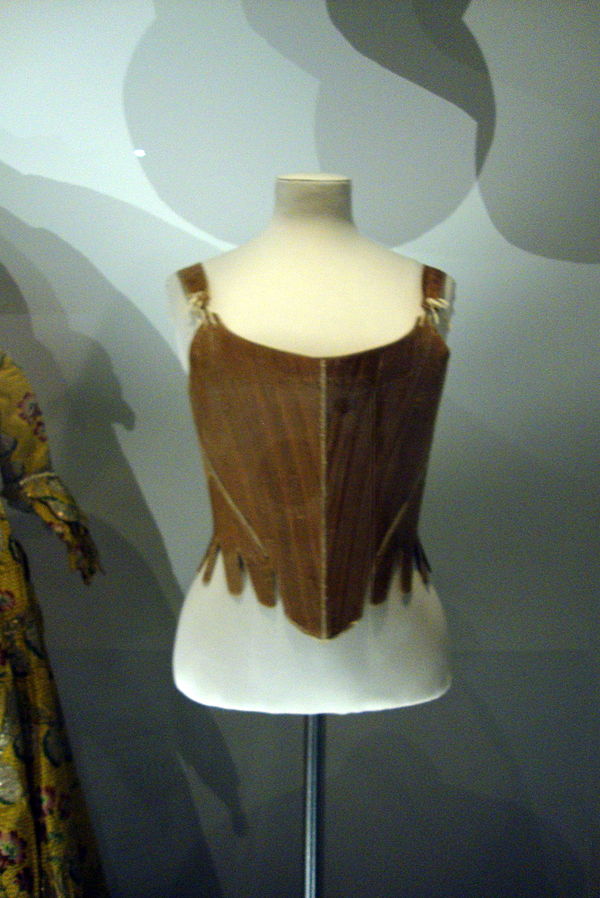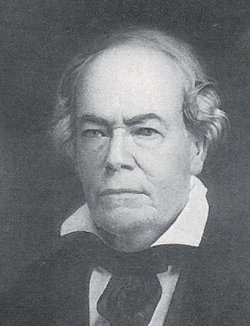Mary Eleanor Laurens & Transgender History

Mary Eleanor “Polly” Laurens was born April 27th, 1770, to Eleanor Ball Laurens and Henry Laurens, members of the South Carolina elite.¹ Eleanor Laurens’s health had been fragile for years, and she died not long after Mary Laurens’s birth, which was her twelfth.² When Mary Laurens’s father took her two brothers to Europe to be educated not long after, Mary Laurens and her sister Martha were left with their uncle, James, and his wife, who was also named Mary Laurens.³ In 1775 they took the girls with them to England, where they lived for two years before moving to France.⁴
In April of 1776, when Mary Laurens was nearly six years old, her brother John came to visit. Afterwards, he sent their father an interesting report. John informed Henry Laurens:
“with all my Aunts Mildness, Polly thinks the Restraint incident to her Sex, very mortifying — and asked one day with as much Gravity as Innocence, if they would not let her wear Breeches & become a Boy — She envied Harry his freedom very much and would wish to be upon the same footing with him — when she was told that this Change would not be effectual — she proposed what she thought would infallibly answer the purpose — to be re-christen’d [sic], and have a male Name.”⁵
This is often brushed off as her being gender transgressive, meaning she believed that people should not be forced into specific roles based on their gender, but is it possible that Mary Eleanor Laurens was actually transgender?
Did Mary Laurens identify as male?
Did Mary Laurens ask to become a boy because she identified as male and experienced gender dysphoria? The wording of John’s letter does leave this as a possibility. First of all, it is hard to tell how much of what he relays he is claiming Mary Laurens said. When he says she asked “if they would not let her wear breeches and become a boy,” and that “she proposed what she thought would infallibly answer the purpose — to be re-christen’d [sic], and have a male Name,” John seems to be paraphrasing quotes from Mary Laurens. His comments that “Polly thinks the Restraint incident to her Sex, very mortifying,” and that “She envied Harry his freedom very much and would wish to be upon the same footing with him,” sound like John adding his own commentary. That means that means we do not necessarily know that Mary Laurens wanted to be a boy for the reason John gives; it is just what John inferred. It is possible that John misunderstood her reasons for wanting to be a boy, and so presented it wrong, or that Mary Laurens simply said she wanted to be a boy, and her brother filled in what he assumed was the reason.

John is also a slightly untrustworthy source, due to his attitudes towards women. Though far from the most sexist man of his time, John did believe women should stay in the role society prescribed for them. He once lectured his sister Martha “Patty” Laurens about how she needed to work on moving and talking more gracefully.⁶ As John describes his sister’s desire to have the same freedoms as Harry, one can almost hear the chuckle in John’s voice. Since John saw women wanting the same freedoms as men as an amusing idea, if he saw his sister’s request as unusual he was probably willing to chalk it up to the fact that the whole subject of gender equality was strange.
If Mary Laurens was a transgender boy, does it make sense that she could come out at the age of six? While it is more typical for a person to discover they are transgender when they are older, often around puberty, it is not impossible. Transgender activist Jazz Jennings always knew, and says that she began trying to communicate her identity to her family as soon as she was able, at the age of just two years old.⁷ Thus it is entirely plausible to imagine six year old Mary Laurens telling her family she was a boy.
Was She Gender Transgressive?

When it comes to the possibility that Mary Laurens was simply a girl who thought she should be able to do anything a boy was allowed to do, the first question naturally is, would a six year old be aware of gender inequality? The idea may seem a little bit outlandish at first; surely a six year old does not have enough experience to have noticed the different ways in which women and men are treated. It must be taken into account however that Mary Laurens was not a girl being raised in 2019; she was six years old in 1776. The differences in the way boys and girls were raised in the late eighteenth century were far greater than they are now, and thus would be far more noticable. For instance, though it was going out of style at the time, it is possible the Laurens children all grew up wearing stays. Stays were a type of shapewear with whale bones in them. For adult women they were a smoothing, shaping, and support garment, but for children their primary function was forcing the children to adopt perfect posture. Boys eventually aged out of stays, but girls did not.⁸ Mary Laurens was about the age when, had she been a boy, she would have been allowed to stop wearing stays, like her brother Harry would have done just a few years previously. According to her brother John, Mary Laurens was the most active of any of the Laurens children, “skipping and galloping about the Room in spite of all their Efforts to restrain her,” and she doubtless would have loved to have been free of this very restrictive garment, but she was denied this.⁹ Whether or not the Laurens children wore stays, Mary Laurens definitely knew that her brothers had all been allowed to stop wearing dresses at her age, something else which would have freed her to be as active as she wanted to, but she was denied this as well.¹⁰ Mary Laurens was also at the age at which her brothers had begun their educations. The Laurens boys all had private tutors until they were old enough to leave for boarding school.Though Mary Laurens may have received some tutoring, much of her education was handled by her aunt, and after her aunt died, by her older sister Martha. Thus the differences in how girls and boys were raised at that time were too glaring not to have been noticed, especially by someone at Mary Laurens’s age, when the two paths really began to diverge.
If Mary Laurens was essentially a proto-Feminist, does her asking to become a boy make sense? At first it may seem like it does not. Why does she ask to become a boy, rather than to have the same rights regardless of her gender? The answer may well be her age. To a six year old who has just been told she cannot do something because she is not a girl, it may make more sense to say then that she wants to be a boy, rather than to actually think through that it is unfair for girls not to be allowed to do the same things as boys.
The Third Option
Thus far I have suggested two separate possibilities: that Mary Laurens said she wanted to become a boy because she identified as male and experienced gender dysphoria, and that she said she wanted to become a boy because she knew gender norms were wrong. But is it possible these two options are not so easily distinguished? Is it possible that Mary Laurens was mad at being forced into female gender norms, not because she knew they were wrong, but because she was actually male? Transgender activist, writer, and YouTuber Jackson Bird remembers experiencing just this phenomenon. Bird recalls that when he was little, and presented as female, it angered him that he was always expected to take charge of stereotypically feminine activities such as decorating, or cleaning up. Looking back on these memories, Bird admits, “I never gave a second thought to whether women should have to do those things, I just knew that I shouldn’t have to do those things.”¹¹ This could have been what Mary Laurens was experiencing. It is possible that she would have agreed, for example, that her sister Martha should have to wear a corset, because Martha was a girl, but that she should not, because she was a boy.
The Gender-Transgressive Question Dogs Transgender History
So far my entire debate on whether or not Mary Laurens was transgender has revolved around whether she was actually transgender, or if she was just gender transgressive. This question seems to be the one that comes up any time a historical figure’s gender identity is questioned. It is a tedious question to have to grapple with every time, but it probably does have to be asked, especially when the person was assigned female at birth. After all, there were many women of the time who lived as men simply to have more opportunities open to them. Discussing possible transgender people in the Early Modern period, historian Gary Ferguson offered a clue to how to answer this question by breaking people assigned female at birth who lived as men into two categories. Ferguson explains that “some did so indefinetly, taking on a male identity, trade, and perhaps marrying a wife, others did so temporarily and strategically, to study, work, fight, move around freely, or to avoid poverty without falling into prostitution.”¹² It is reasonable to assume that the ones who “did so indefinetly” were in fact transgender men, while the ones who “did so temporairly and strategically” were women in disguise, though this sometimes becomes more complicated. For instance, a woman living as a man “strategically” may find that this strategic goal requires her to keep up this masquerade indefinitely; meanwhile an actual transgender man would find himself with new opportunities, even though this is not why he transitioned.
While developing this criteria further is important to the study of transgender history in general, they do not help much with the case of Mary Laurens, who never got to live presenting as a man at all. In response to John’s letter, their father replied “a narrative of the history of Joan of Arc may cure the little Maid’s ambition for Breeches.”¹³ There is no further record of Mary Laurens’s gender identity.
The Rest of Mary Laurens’s Life
Near the end of Mary Laurens’s time in France her aunt and uncle died, and she was left in the care of her older sister.¹⁴ Henry Laurens had been a prisoner in the Tower of London for several years, and in 1785, not long after his release, he traveled home with Harry.¹⁵ Martha and Mary followed, accompanied by their niece, Frances.¹⁶ Frances was John’s daughter, but she would be raised by Martha, as John was killed in the war three years earlier, and his wife had died not long before him.

Not long after her return to America, when she was almost sixteen, Mary Laurens told her father she wanted to marry Charles Pinckney, a veteran of the Revolution and an up and coming South Carolinian politician. Henry initially forbade her, but two years later he relented, and she married Pinckney on her eighteenth birthday.¹⁷ They were married for six years and had three children together: Frances, Mary, and Henry. Mary Laurens had complications giving birth to Henry, and died not long after.¹⁸ She was twenty-four.
This is definitely not an open and shut case, and it is entirely possible that there is more to this story. For now though, it seems the available evidence is more on the side of Mary Laurens not being transgender. Even so, Mary Laurens’s case brings up a lot of the problems facing the study of transgender people and experiences in the eighteenth century: how to separate gender identity from the struggle for gender equality, whether these things can be cleanly separated, and, ultimately, the need for a solid set of criteria by which a historical figure’s gender identity can be proven. Most importantly, this case highlights the need for a more vigorous search for transgender people in all eras of history. Mary Laurens’s story is usually automatically written off as her just being gender transgressive, and few if any researchers have paused to wonder if she was transgender. Though the assumption that she was not transgender turned out to be correct, this never should have been assumed. To pass by someone in history who outright said they wanted to be a different gender, without even pausing for thought, is criminal neglect of an area of history that has been neglected for far too long.
I want to keep educating you about LGBT+ history. Please consider helping me do so by becoming my Patron! 18th Century Pride is creating LGBT+ History Content | Patreon
This article was edited on 6/28/21, for two reasons. The first was to improve some of the language used. When I first wrote this article I was new to writing about transgender topics, and I used offensive and unclear terms like “biological women” when I meant “people assigned female at birth.” The second was to fix misinformation I originally included about stays. I originally said that adolescent and pre-teen girls wore stays, but that adult women wore corsets. Stays and corsets are actually different in many ways, and women could wear stays or corsets depending on their fashion needs. For more information on stays vs. corsets, see the first part of source #8.
- https://john-laurens.tumblr.com/post/92867025788/important-dates-in-the-laurens-family, “Important Dates in the Laurens Family”
- John Laurens and the American Revolution, George D. Massey, 47
- Massey, 51
- https://sc.edu/study/colleges_schools/artsandsciences/history/research/pinkney_papers_projects/biographies/index.php
- John Laurens to Henry Laurens, 26 April 1776, quoted in: https://john-laurens.tumblr.com/post/92890583133/sweet-little-polly-is-the-admiration-of-every-body
- John Laurens to Henry Laurens, 26 April 1776, quoted in: https://john-laurens.tumblr.com/post/144175918438/what-was-laurens-opinion-on-womens-suffrage
- https://youtu.be/-7Z0I2z1V7s, “Coming Out Transgender At Age 5 With Jazz Jennings”, Pop Sugar
- Information on stays: https://youtu.be/j8tRK3gn-NA Information on children aging out of stays: https://www.history.org/history/clothing/children/child01.cfm, “Children’s Clothing”, Linda Baumgarten
- John Laurens to Henry Laurens, 20 March 1776, quoted in: https://john-laurens.tumblr.com/post/108946992508/harry-enjoys-vigorous-health-nor-does-he-want-the
- See #8
- https://youtu.be/eLrMCpSw9Ag, “Trans or Just Upset By Your Place in Society?”, Jackson Bird
- “Early Modern Transitions: From Montaigne to Choisy”, Gary Ferguson, 4
- Henry Laurens to John Laurens, 3 February 1776, quoted in Massey, 104
- Massey, 313
- Massey, 312
- Ibid.
- Christopher Gadsden and Henry Laurens: The Parallel Lives of Two American Patriots, quoted in: https://john-laurens.tumblr.com/post/132506772838/question-do-we-know-much-about-johns-siblings-i
- For Mary Laurens’s children see: #4. For her death see: Massey, 317
L.M. Smelser
This is very well researched and fascinating!
L. Thomas
I’m curious about the fact that you say Mary Laurens had three children with Charles Pickney. In an article about Eliza Lucas Pickney, Charles Pickney’s second wife, the narrative states:: “Having been widowed, Charles Pinckney proposed to the young Eliza. He was forty-five, and she was twenty-two. The marriage saved her from returning to her father’s home. Prior to their marriage, Charles Pinckney fathered no children. Eliza mothered four children. Her first son Charles Cotesworth was born in 1746. Their second child, George Lucas, was born in 1747 but passed away soon after. Then her only daughter Harriott was born in 1749. And finally the youngest son, Thomas, was born in 1750. Motherhood was an exciting new experiment that Eliza took on happily.” This can be found at https://www.nps.gov/chpi/learn/historyculture/eliza-lucas-pinckney.htm
I wonder which is correct? The National Park Service for the Pickney estate or your research? It seems like a big fact!
megangack
Great question! Actually, you are looking at the wrong Charles Pinckney! The Charles Pinckney who married Eliza L. Pinckney lived from 1699 to 1758. The Charles Pinckney who married Mary Eleanor Laurens lived from 1757 to 1824.
There are a lot of Charles Pinckneys in that part of US history, and I too sometimes mix them up!
Hope this helps!